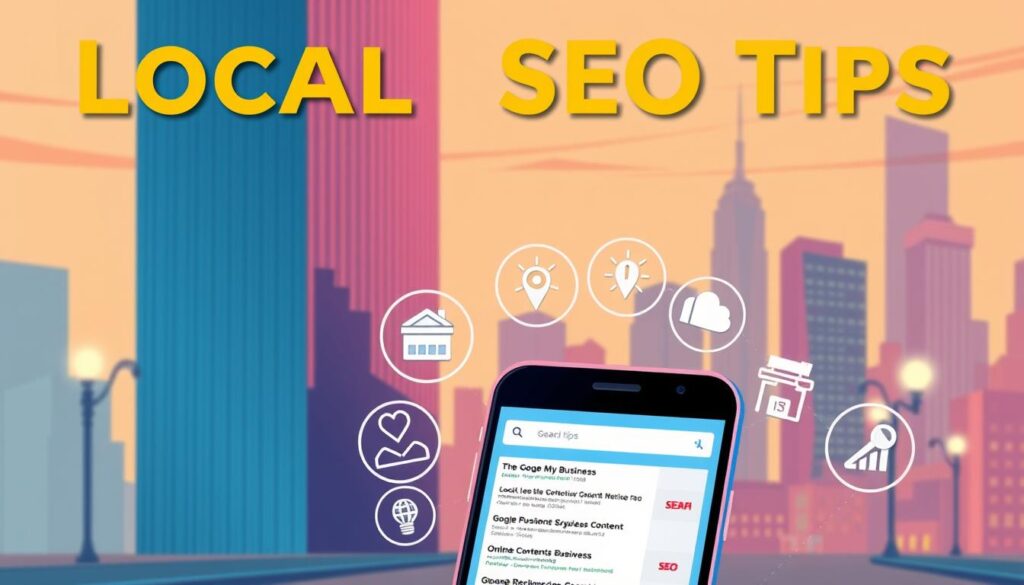When working with a branding agency in the UK, a well-crafted creative brief is essential for ensuring your project’s success. This document serves as the foundation for your collaboration, outlining the scope and objectives while acting as a contract between you and the agency. Without a clear brief, misinterpretations and delays are more likely to occur.
A creative brief is more than just a formal document; it’s a roadmap that guides the agency in understanding your brand’s identity, target audience, and the desired outcomes. Many marketers make the mistake of omitting crucial details such as business objectives or audience insights, which can lead to a misaligned final product.
By investing time in creating a detailed and insightful brief, you can significantly reduce the chances of miscommunication and ensure that the project stays on track. This guide will walk you through each step of developing a concise and effective creative brief, helping you avoid common pitfalls and set your project up for success.
Key Takeaways
- A well-written creative brief reduces misinterpretations and delays.
- Omitting business objectives or audience insights can lead to a misaligned final product.
- A detailed brief increases project success rates by up to 50%.
- Approximately 75% of agencies state that a detailed brief improves the quality of deliverables.
- Investing time in crafting a creative brief can save up to 20 hours in revisions later.
Understanding the Importance of a Well-Crafted Brief
When collaborating with a UK-based branding agency, a meticulously prepared brief is crucial for the success of your project. This document aligns all parties, ensuring everyone works towards the same goals and outcomes. A clear brief acts as a contract, reducing misunderstandings and delays.
Why a Detailed Brief Matters
A detailed brief is essential for guiding the agency in understanding your business and marketing objectives. It outlines your target audience and desired outcomes, serving as a roadmap for the project. Omitting key details like business goals or audience insights can lead to miscommunication and a final product that misses the mark.
By investing time in creating a comprehensive brief, you can avoid common pitfalls and ensure the project stays on track. This guide will help you develop a concise and effective brief, covering all necessary aspects to set your project up for success.
The Impact on Project Success
| Aspect | Effective Brief | Ineffective Brief |
|---|---|---|
| Alignment | Ensures all parties are aligned | Leads to miscommunication |
| Revisions | Reduces the need for revisions | Increases revision requirements |
| Success Rate | Increases project success rate | Decreases project success rate |
As shown in the table, a well-crafted brief significantly impacts project success. It ensures alignment, reduces revisions, and enhances the overall success rate. A clear brief is more than just a document; it’s a roadmap that guides the agency in understanding your brand’s identity and the desired outcomes.
For more information on choosing the right digital marketing agency in the UK, visit this resource.
Defining Your Business and Marketing Objectives
When creating a creative brief for your UK-based branding project, it’s essential to start by clearly defining your business and marketing objectives. These objectives serve as the foundation for your project, ensuring everyone involved understands the direction and desired outcomes.
Clarifying Business Objectives
Your business objectives should be specific, measurable, achievable, relevant, and time-bound (SMART). For example, aiming to increase your customer base by 20% within the next 12 months is a SMART goal. These objectives guide your team and the branding agency, ensuring alignment with your company’s overall vision.
Involve your key team members in this process to integrate diverse perspectives. This collaboration helps in creating well-rounded objectives that resonate with your company’s values and customer needs.
Mapping Out Marketing Goals
Next, outline your marketing goals to support your business objectives. These should be specific actions that help achieve your broader business aims. For instance, increasing website traffic by 30% or boosting social media engagement by 50% can be effective marketing goals.
Ensure these goals are measurable and time-bound. This allows you to track progress and make necessary adjustments. Remember, your marketing goals should align with your business objectives to maintain a cohesive strategy.
By setting clear business and marketing objectives, you create a roadmap that guides both your internal team and the branding agency. This clarity ensures that everyone works towards the same goals, enhancing the likelihood of project success.
Mastering How to Brief a Branding Agency
Effective communication is key when working with a branding agency in the UK. A well-crafted brief ensures your project stays on track and meets your objectives. It serves as a clear roadmap, guiding the agency to deliver results that align with your vision.
Key Elements to Include
To create an effective brief, start by outlining your business and marketing objectives. These should be specific, measurable, and time-bound. For example, aim to increase website traffic by 20% within six months. Next, define your target audience and their preferences to ensure the agency understands who they’re designing for.
Include background context and clear key messages. This helps the agency grasp your brand’s identity and the core message you want to convey. Aligning your branding strategy with your market positioning is crucial for a cohesive approach. Additionally, provide visual references and examples to clarify expectations and desired outcomes.
Set realistic timelines and budgets to avoid delays and overruns. Establishing clear deliverables and expectations ensures everyone is on the same page. Regular collaboration between you and the agency fosters innovation and ensures the final product meets your needs.
By following these steps, you’ll create a comprehensive brief that guides the agency effectively, leading to a successful project outcome.
Identifying Your Target Audience and Competitor Insights
Understanding your target audience and competitor insights is vital for crafting a successful creative brief. This process ensures your branding efforts resonate with the right people and stand out in the market.
Understanding Customer Demographics and Behaviour
To effectively engage your audience, you need to delve into their demographics, behaviours, and interests. This process involves gathering both qualitative and quantitative data. For instance, demographic segmentation can reveal age, gender, and income levels, while psychographics might uncover lifestyle preferences and values. Understanding these aspects helps tailor your media strategy to specific service needs, ensuring your messaging aligns with their preferences.
Leveraging Competitor Analysis
Competitor analysis is another crucial process in refining your brief. By examining your competitors’ strategies, you can identify gaps and opportunities for differentiation. Gathering both qualitative and quantitative competitor data allows for effective benchmarking. This process helps define clear goals, such as increasing market share or improving brand awareness, ensuring your project stays focused and aligned with your objectives.
| Aspect | Effective Competitor Analysis | Ineffective Competitor Analysis |
|---|---|---|
| Alignment | Identifies market gaps | Overlooks opportunities |
| Strategy | Drives differentiation | Lacks clear direction |
| Goals | Enables clear targeting | Leads to vague objectives |
By understanding your audience and competitors, you can set clear, achievable goals that guide your project to success. This process ensures your creative brief is comprehensive and effective, leading to better engagement and results.
Articulating Your Brand Story and Vision
Your brand story is the heart of your identity, shaping how customers connect with your business. A clear vision and compelling narrative are essential for building trust and loyalty.
Developing a Clear Vision Statement
A strong vision statement outlines your brand’s future aspirations. It should be concise, yet ambitious, guiding every aspect of your strategy. For example, a vision statement might aim to revolutionise your industry or become a household name.
When crafting your vision, consider your long-term goals and core values. This statement will inspire your team and serve as a roadmap for your brand’s growth.
Crafting a Compelling Brand Narrative
Your brand narrative should resonate emotionally with your audience. Share your origins, values, and mission to create a story that feels authentic and relatable.
Use storytelling techniques to highlight what makes your brand unique. For instance, explain how you solve problems or improve lives. This approach helps differentiate your brand in a crowded market.
Key Benefits of a Strong Brand Story:
| Aspect | Effective Approach | Ineffective Approach |
|---|---|---|
| Clarity | Clear vision and narrative | Unclear or vague messaging |
| Engagement | Resonates emotionally | Lacks emotional connection |
| Alignment | Consistent with strategy | Misaligned with goals |
Aligning your vision and narrative with your overall strategy ensures consistency in tone and visual style, fostering a cohesive brand image.
Outlining Key Brand Elements and Deliverables
Clearly detailing your brand elements and deliverables is crucial for a successful project. This ensures your branding agency understands your expectations and can deliver work that aligns with your vision.
Establishing Brand Guidelines
Brand guidelines are the backbone of your visual identity. They ensure consistency across all platforms, from your website to social media. Include details like typography, colour palettes, and imagery styles to guide the agency effectively.
Without clear guidelines, your brand’s identity may become diluted. For example, using inconsistent fonts or colours can weaken your brand’s recognition. By setting these standards, you help maintain a cohesive image.
Detailing Project Deliverables
Explicit deliverables ensure the agency knows exactly what’s expected. Whether it’s a website redesign or a logo, clearly outline each item. This avoids misunderstandings and ensures the final product meets your needs.
Reviewing past projects can provide insights into effective deliverable management. This helps you set realistic expectations and communicate clearly with the agency.
| Aspect | Clear Guidelines | Vague Guidelines |
|---|---|---|
| Consistency | Maintains brand image | Leads to inconsistencies |
| Expectations | Clear understanding | Unclear expectations |
| Visual Elements | Specific styles | Unspecified styles |
By documenting every key element without ambiguity, you ensure the agency delivers work that resonates with your brand’s identity. This attention to detail is vital for a successful outcome.
For more information on creating a detailed brand brief, visit this resource.
Balancing Creativity and Clarity in Your Brief
Striking the right balance between creativity and clarity is essential when working with a UK-based branding agency. While you want to give the agency enough freedom to innovate, you also need to provide clear guidelines to ensure the final product aligns with your vision.
Encouraging Innovation Within Clear Boundaries
One of the biggest challenges is providing enough detail without stifling creativity. Set clear boundaries that allow for creative problem-solving. For example, specify your target audience and core interests to guide the agency without restricting their innovative approach.
Consider the iconic contour bottle of Coca-Cola, which resulted from a simple yet effective brief. The balance between creativity and clarity led to a design that has endured for decades. This example shows how well-defined boundaries can foster innovation.
| Aspect | Effective Balance | Ineffective Balance |
|---|---|---|
| Alignment | Ensures clear direction | Leads to misinterpretation |
| Creativity | Fosters innovation | Stifles creativity |
| Outcome | Meets objectives | Misses the mark |
By clearly communicating your brand’s core interests and target audience, you ensure the agency understands your vision. This balance is key to a successful project, leading to innovative solutions that resonate with your audience.
Defining Budget, Timing and Project Specifications
Setting a realistic budget and timeline is crucial for your project’s success. These elements ensure your vision is achievable and help prevent unrealistic expectations. A well-defined budget and timeline guide the creative process, ensuring everyone stays on the same page.
Establishing a Realistic Budget
Your budget should be divided into three key areas: creative, production, and media. This breakdown ensures clarity and helps prevent overspending. For example, allocate specific amounts to each segment to maintain transparency. Clear financial boundaries also prevent scope creep, keeping your project on track.
Setting Practical Timelines
Plan your timeline carefully to streamline the creative process. Early planning helps identify potential bottlenecks and ensures deadlines are met. Break your project into manageable phases, each with clear milestones. This approach keeps the workflow smooth and ensures timely delivery.
| Aspect | Effective Approach | Ineffective Approach |
|---|---|---|
| Budget | Clear breakdown into segments | Vague or undefined |
| Timeline | Structured with milestones | Overly rigid or unclear |
| Communication | Regular updates | Infrequent or unclear |
Clear communication of these details is essential. Discuss your budget and timeline openly with your agency to avoid misalignment. This ensures everyone understands the project’s scope and constraints, leading to better outcomes. For more tips on creating a project budget, visit this resource. Additionally, learning to spot red flags in digital marketing agencies can help you make informed decisions, as discussed here.
Incorporating Best Practices: Tips and Real-World Examples
Creating an effective creative brief requires more than just gathering information; it demands a strategic approach. By incorporating best practices and learning from real-world examples, you can craft a brief that drives successful outcomes. This section explores actionable tips, successful campaign examples, and common pitfalls to avoid.
Learning from Successful Campaigns
LinkedIn’s rebranding campaign exemplifies the power of a well-defined brief. By focusing on a clear voice and tone, they aligned their messaging with their audience’s professional aspirations. Similarly, Oatly’s success stems from a brief that balanced creativity with specific brand guidelines, ensuring consistency across all platforms.
Avoiding Common Pitfalls
One common mistake is inconsistency in voice and tone. For instance, a brief that doesn’t clearly define these elements can lead to disjointed messaging. Another pitfall is vague objectives, which can result in misaligned deliverables. By learning from these examples, you can refine your approach and steer clear of such issues.
| Aspect | Effective Approach | Ineffective Approach |
|---|---|---|
| Clarity | Clear voice and tone | Vague messaging |
| Engagement | Resonates emotionally | Lacks connection |
| Consistency | Aligned with strategy | Misaligned with goals |
For more insights on crafting effective briefs, visit this resource. By integrating these best practices, you can elevate your next project and achieve exceptional results.
Conclusion
In conclusion, crafting an effective brief is the cornerstone of a successful branding campaign. By summarising the key points covered in this guide, you can ensure your project is well-aligned with your objectives. Clarity, detailed planning, and comprehensive preparation are essential for achieving the best results. Apply these techniques to foster better collaboration with your chosen experts and revisit the step-by-step guide in this article to refine your approach. Remember, a well-crafted brief not only streamlines the process but also significantly enhances the likelihood of a successful outcome. Make it your foundation for building a strong, memorable brand identity.
Key Takeaways:
- Clarity and detailed objectives are crucial for success.
- Comprehensive planning ensures better alignment with your goals.
- A well-crafted brief is the foundation of a successful campaign.
FAQ
What are the key elements to include in a branding brief?
The key elements to include in a branding brief are clear project objectives, target audience insights, competitive analysis, brand guidelines, deliverables, budget, timeline, examples, communication plan, and success metrics. These elements guide the agency effectively and ensure a successful project.
How can I ensure my branding brief is detailed yet not overwhelming?
Start with the essentials such as objectives, audience, and deliverables. Gradually add more details as needed, ensuring each piece of information is relevant and contributes to the project’s clarity and direction.
What is the best way to measure the success of a branding project?
Define success metrics such as increased brand awareness, website traffic, or social media engagement. Consider setting KPIs and seek the agency’s input for additional measurement strategies based on their expertise.
How can I balance creativity and clarity in the brief?
Provide enough structure to guide the agency while allowing room for creative ideas. Include examples of what you like and dislike to offer direction without stifling innovation.
What is the importance of including a brand story and vision in the brief?
The brand story and vision help the agency understand your company’s mission and values, ensuring the branding accurately represents your identity. Consider including a short narrative or case study for clarity.










